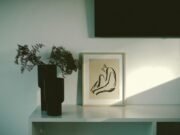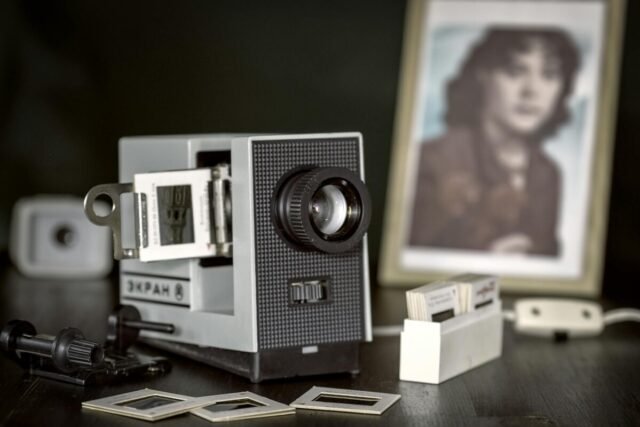Movie nights just got more exciting! Forget expensive store-bought projectors when you can create your own immersive cinematic experience at home for a fraction of the cost. Building a DIY projector is surprisingly easy, fun, and incredibly rewarding. With a few simple materials and a little creativity, you can transform your living room into a budget-friendly home theater that rivals the best cinema experiences. In this comprehensive guide, we'll walk you through the process of how to make a projector using everyday items, so you can enjoy your favorite movies and shows on the big screen without breaking the bank.
What You'll Need
To embark on this exciting DIY projector journey, gather the following materials:
- Shoebox (or any sturdy cardboard box): This will serve as the main housing for your projector. Choose a box that's large enough to accommodate your smartphone and magnifying glass.
- Magnifying glass (serves as the projector lens): A magnifying glass with a diameter of around 2-3 inches works best. It will focus the image from your smartphone onto the projection surface.
- Smartphone (acts as the image source): Your smartphone will be the heart of your homemade projector. It will display the movies, shows, or images you want to project.
- Black paint or black paper (for light-proofing): To ensure optimal image quality, you'll need to make the inside of the box as dark as possible. Use black paint or line the interior with black paper to minimize light reflections.
- Tape (to secure components): You'll need tape to secure the magnifying glass and smartphone in place, as well as to seal any gaps or cracks in the box.
- Cutter or scissors (for precise cuts): You'll need a sharp cutting tool to create the necessary openings in the shoebox for the lens and smartphone.
- Ruler or measuring tape (for accurate measurements): To ensure precise cuts and proper alignment of components, use a ruler or measuring tape throughout the assembly process.
Most of these items can be easily found online, at hardware stores, or through upcycling household objects. Don't be afraid to get creative and use what you have on hand to build your budget projector.
Step-by-Step Assembly
Follow these numbered instructions to build your own homemade projector:
-
Prepare the shoebox: If your shoebox has any logos or designs on it, cover them with black paper or paint to create a clean, dark surface. This will help minimize light reflections inside the box.
-
Cut the lens hole: On one end of the shoebox, measure and mark a circle slightly smaller than your magnifying glass. Carefully cut out the circle using your cutter or scissors. Ensure the edges are clean and smooth.
-
Secure the magnifying glass: Place the magnifying glass over the hole you just cut, ensuring it fits snugly. Use tape to secure the magnifying glass in place, making sure it's centered and flush against the box.
-
Create the smartphone opening: On the opposite end of the box, measure and mark a rectangle in the center that's slightly smaller than your smartphone. Cut out the rectangle, creating a snug fit for your phone.
-
Light-proof the interior: Paint the inside of the shoebox black or line it with black paper. This step is crucial to minimize light reflections and enhance image quality. Be thorough and cover all surfaces, including the flaps.
-
Insert your smartphone: Place your smartphone in the rectangular opening, with the screen facing the magnifying glass. Ensure it fits securely and doesn't move around.
-
Seal the box: Close the shoebox and use tape to seal any gaps or cracks along the edges. This will prevent light leakage and maintain a dark environment inside the projector.
Refer to the images below for visual guidance:
| Step | Image |
|---|---|
| 1 | [Image 1: Shoebox preparation] |
| 2 | [Image 2: Cutting the lens hole] |
| 3 | [Image 3: Securing the magnifying glass] |
| 4 | [Image 4: Creating the smartphone opening] |
| 5 | [Image 5: Light-proofing the interior] |
| 6 | [Image 6: Inserting the smartphone] |
| 7 | [Image 7: Sealing the box] |
If you encounter any issues during the assembly process, such as light leaks or a misaligned lens, don't worry. Simply adjust the components, apply more tape, or make additional cuts as needed. Building a DIY projector is a trial-and-error process, so be patient and persistent.
Optimizing Your Projector Space
To get the best results from your DIY projector, consider the following factors:
- Placement: Position the projector about 6-10 feet away from a white wall or projector screen for optimal image size and clarity. Experiment with different distances to find the sweet spot for your specific setup.
- Lighting: Ensure the room is completely dark for the best image quality. Even small amounts of ambient light can wash out the projection, so close curtains, turn off lamps, and minimize any light sources in the room.
- Sound: While your smartphone's built-in speakers may suffice for casual viewing, pairing your projector with external speakers or a sound system will greatly enhance the audio experience. Connect your phone to speakers via Bluetooth or a cable for immersive, room-filling sound.
- Projection Surface: A smooth, white wall or a dedicated projector screen will provide the best image quality. If you don't have a suitable wall, consider hanging a white bedsheet or investing in an affordable projector screen.
Advanced Options & Upgrades
Take your homemade projector to the next level with these upgrades:
- Fresnel Lens: Replace the magnifying glass with a Fresnel lens for improved brightness and image quality. Fresnel lenses are designed to focus light more efficiently, resulting in a clearer and more vibrant projection.
- Phone Stand: Create or purchase an adjustable stand for your smartphone to enhance stability and allow for easy focus adjustments. A stable phone stand will minimize vibrations and ensure a consistent image.
- External Speakers: Connect your smartphone to external speakers or a sound system for powerful, room-filling audio. Look for speakers with Bluetooth connectivity or a 3.5mm audio jack for easy pairing with your phone.
- Cooling System: If you plan on using your projector for extended periods, consider adding a small fan or cooling system to prevent your smartphone from overheating. Overheating can cause performance issues and potentially damage your device.
- Tripod Mount: Attach your projector to a tripod for added stability and adjustability. This is especially useful for outdoor movie nights or when you need to position the projector at a specific height.
Fine-Tuning Your Image
Achieve the perfect picture with these simple adjustments:
- Focusing: Adjust the distance between the smartphone and the lens until the image appears sharp and clear on the projection surface. You may need to experiment with slight movements to find the optimal focus point.
- Brightness/Contrast: Optimize your smartphone's display settings, such as brightness and contrast, to suit the room's lighting conditions. Increasing brightness can help combat ambient light, while adjusting contrast can improve image depth and clarity.
- Keystone Correction: If the projected image appears skewed or trapezoidal, slightly tilt the projector or adjust the smartphone's position to correct the distortion. Some smartphones have built-in keystone correction settings that can help achieve a perfectly rectangular image.
- Zoom and Aspect Ratio: Use your smartphone's zoom and aspect ratio settings to fine-tune the projected image. Zooming in can help fill the screen, while adjusting the aspect ratio ensures the image maintains its original proportions.
Get Creative With Your Projector
Your DIY projector is not just limited to movie nights. Get creative and explore these fun ideas:
- Decorative Housings: Transform the simple shoebox into a stylish design element by painting, decoupaging, or adding embellishments. Create a themed projector that matches your room's decor or reflects your personal style.
- Outdoor Movie Nights: Host a backyard cinema experience by setting up your projector outdoors on a warm summer night. Hang a white bedsheet or projector screen, lay out some blankets and pillows, and enjoy a movie under the stars.
- Gaming Sessions: Connect your gaming console or computer to your projector for an immersive gaming experience. Project your favorite games onto a large wall or screen for a more engaging and interactive gaming session.
- Art Installations: Use your projector to create unique art installations or interactive displays. Project images, patterns, or videos onto walls, ceilings, or objects to transform your space into a captivating visual experience.
- Educational Presentations: Utilize your DIY projector for educational purposes, such as presentations, lectures, or workshops. Project slides, diagrams, or videos to engage your audience and make learning more interactive.
Building your own DIY projector is a rewarding and cost-effective way to bring the magic of the big screen into your home. By following this comprehensive guide on how to make a projector, you can create a budget projector that delivers an immersive cinematic experience.
Not only will you save money compared to buying a high-end projector, but you'll also have the satisfaction of having built it yourself. Plus, the customization options are endless, allowing you to tailor your projector to your specific needs and preferences.
So gather your materials, follow the step-by-step instructions, and get ready to transform your living space into a personal movie theater. Don't be afraid to experiment, get creative, and make your DIY projector truly your own.
Once you've completed your project, invite friends and family over for an unforgettable movie night or gaming session. Share your experience and inspire others to join the homemade projector revolution. With a little ingenuity and effort, anyone can enjoy the thrill of a big-screen experience without the hefty price tag.
So what are you waiting for? Start building your own DIY projector today and discover a whole new way to enjoy your favorite content. Happy projecting!































